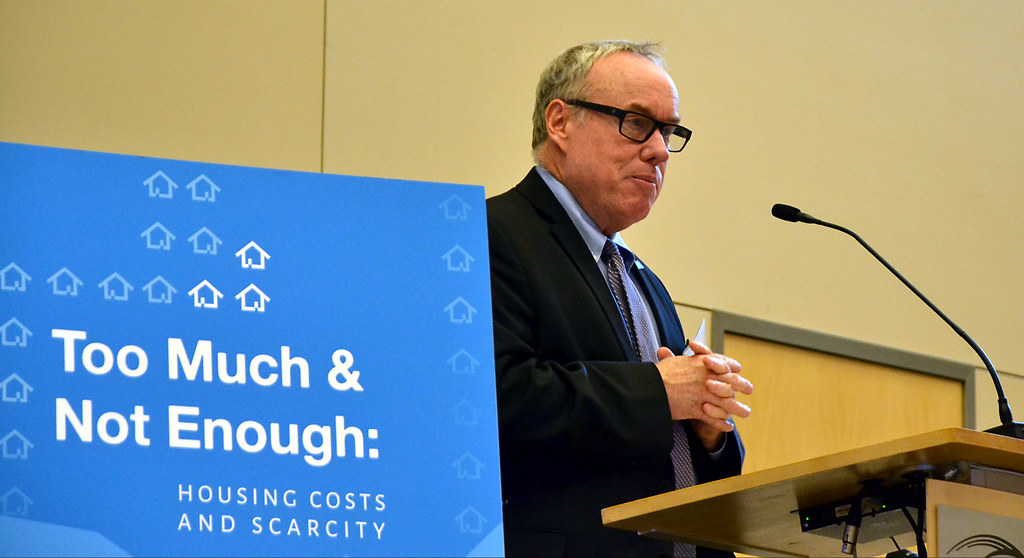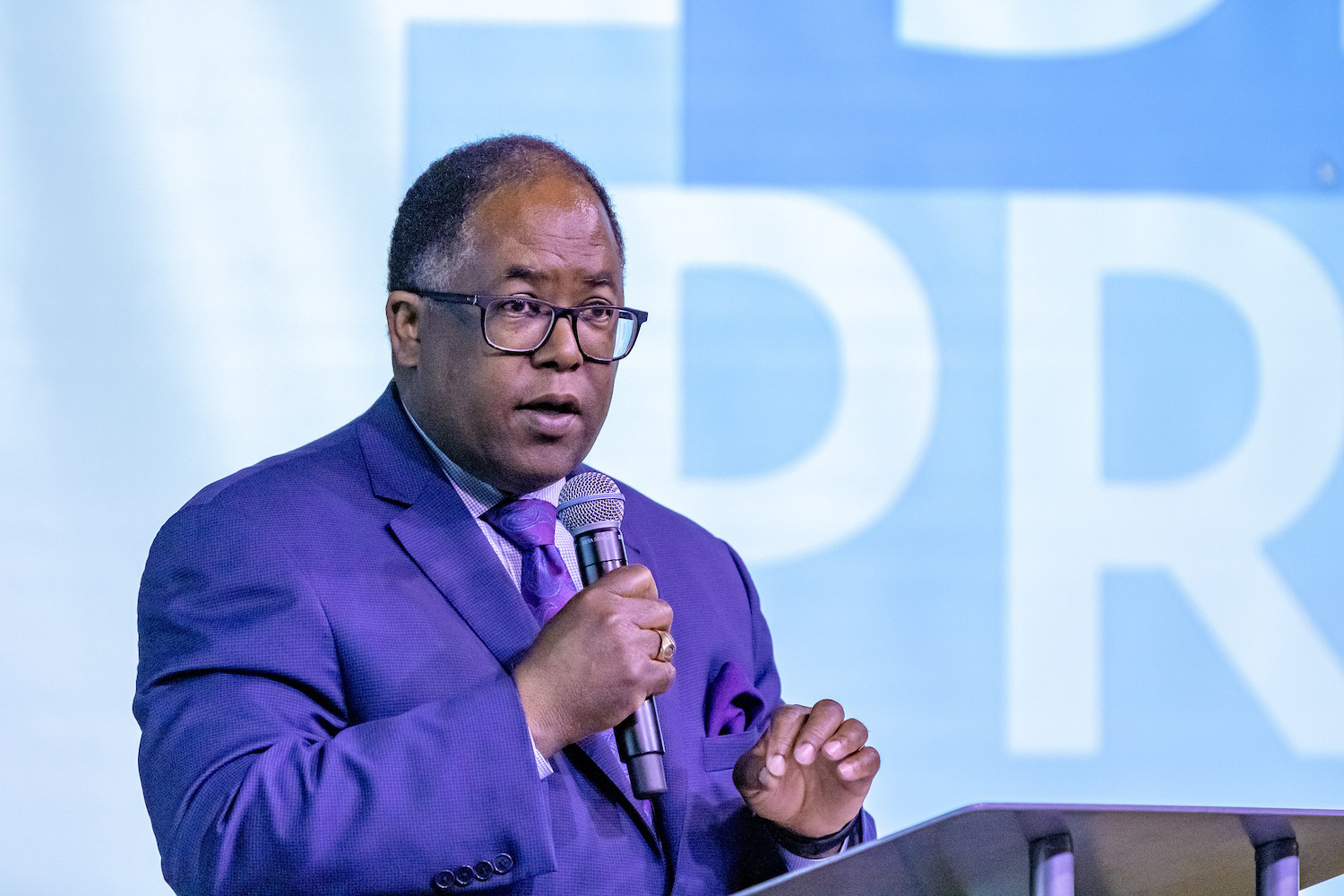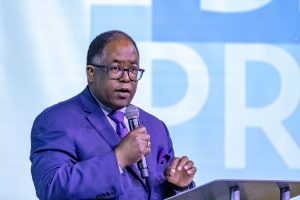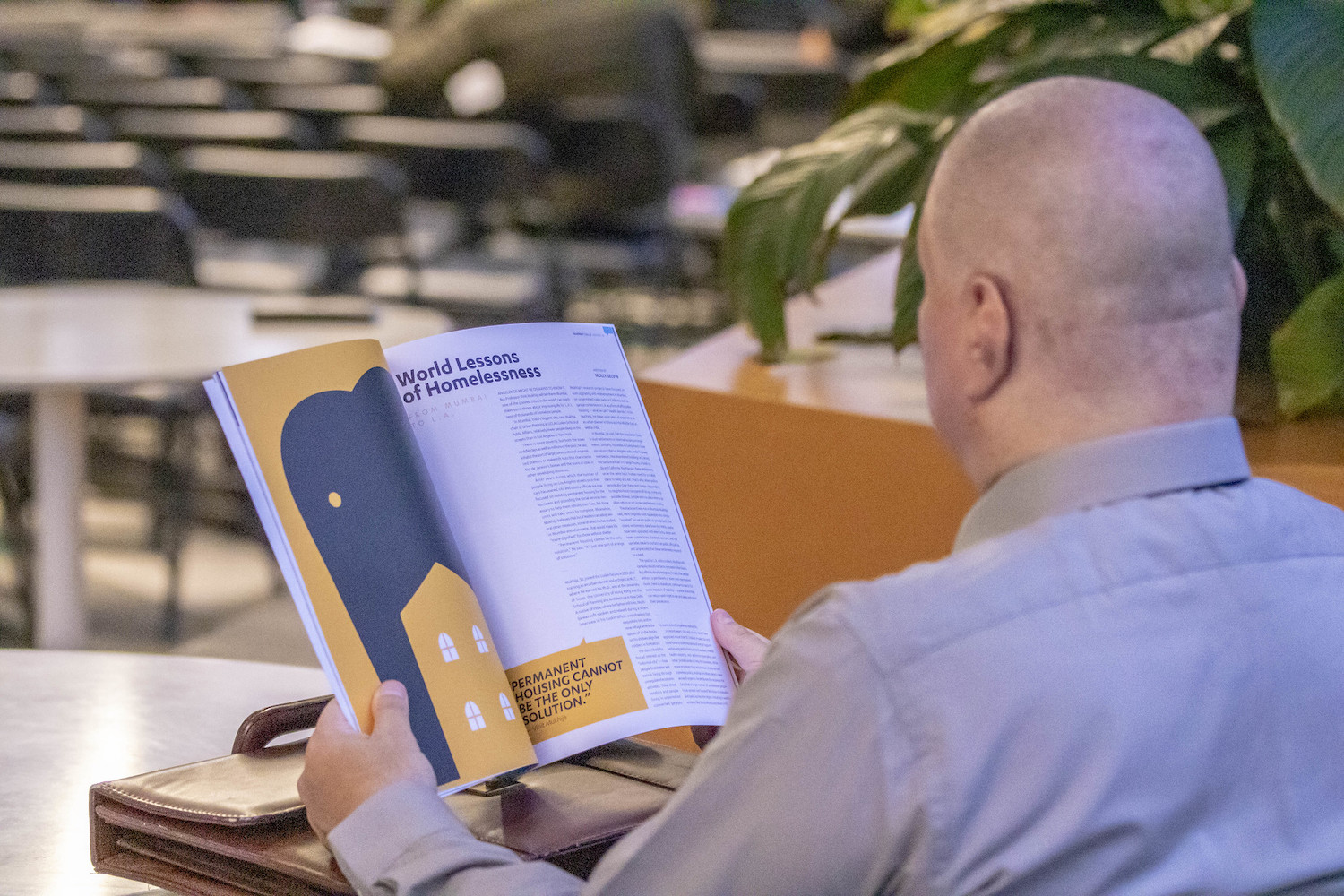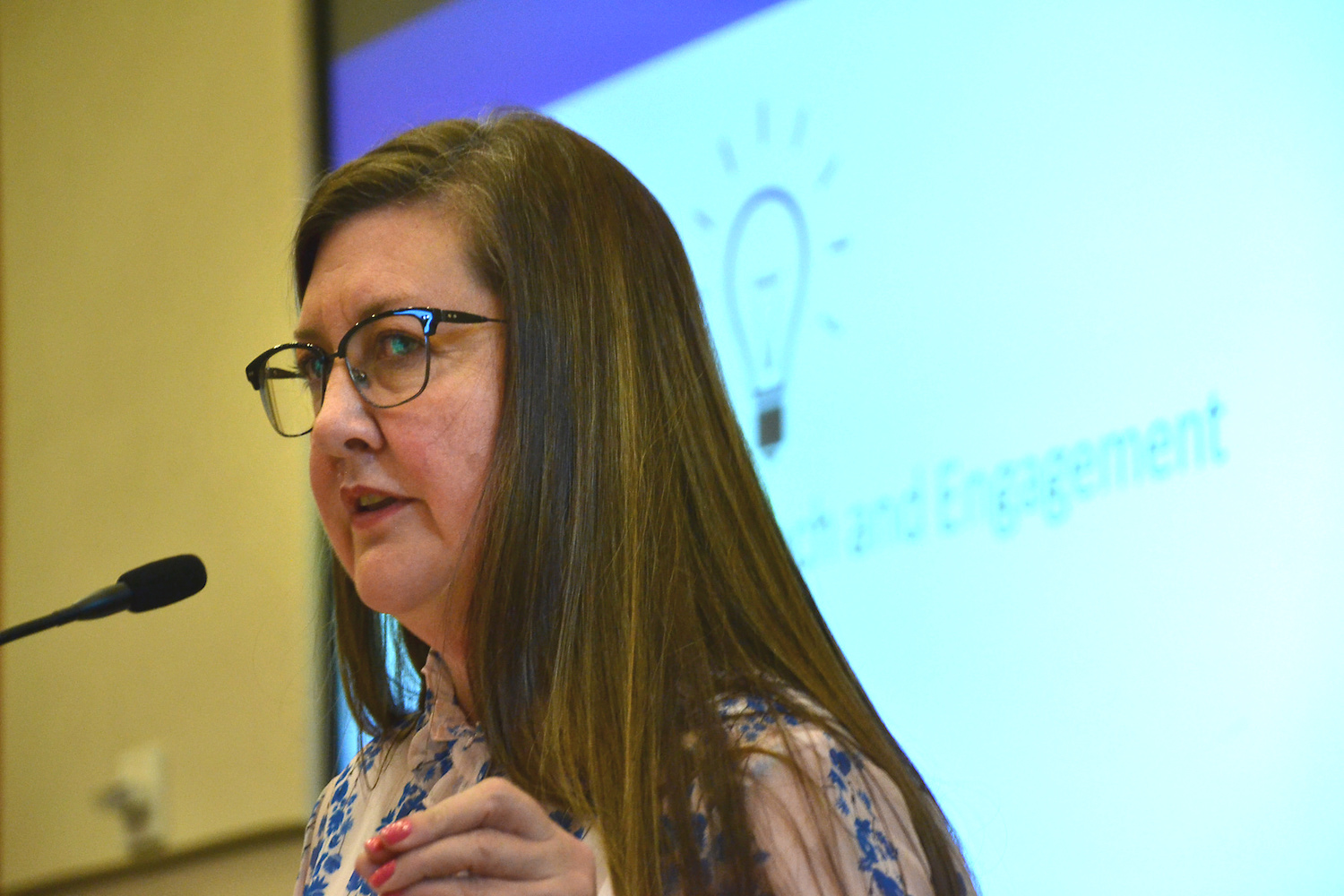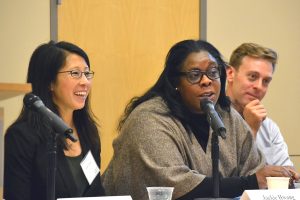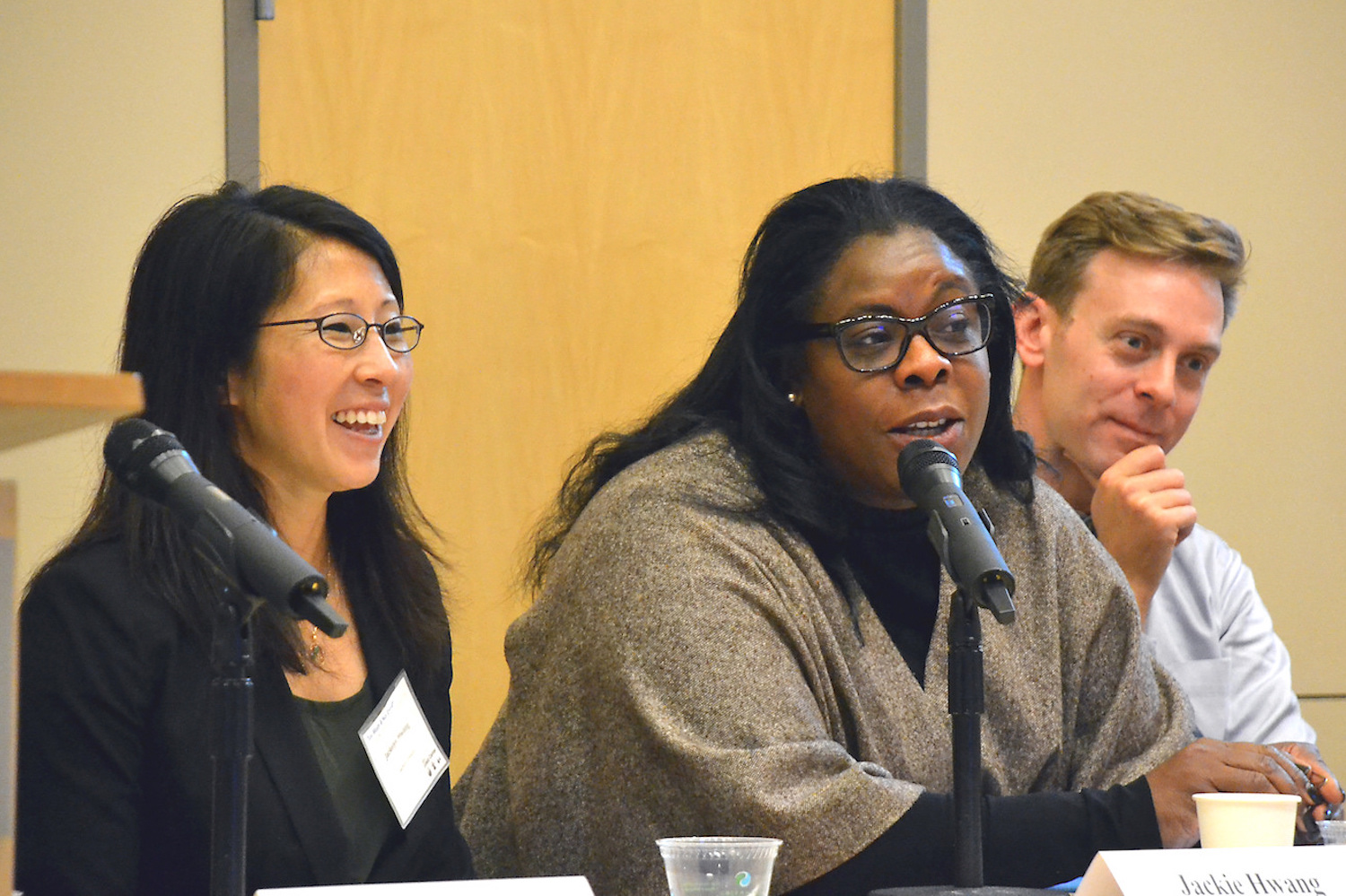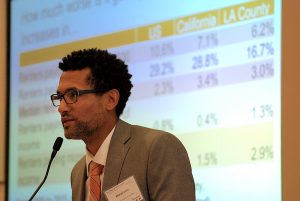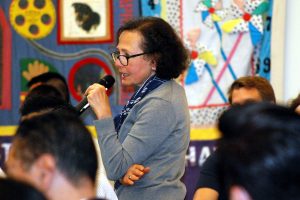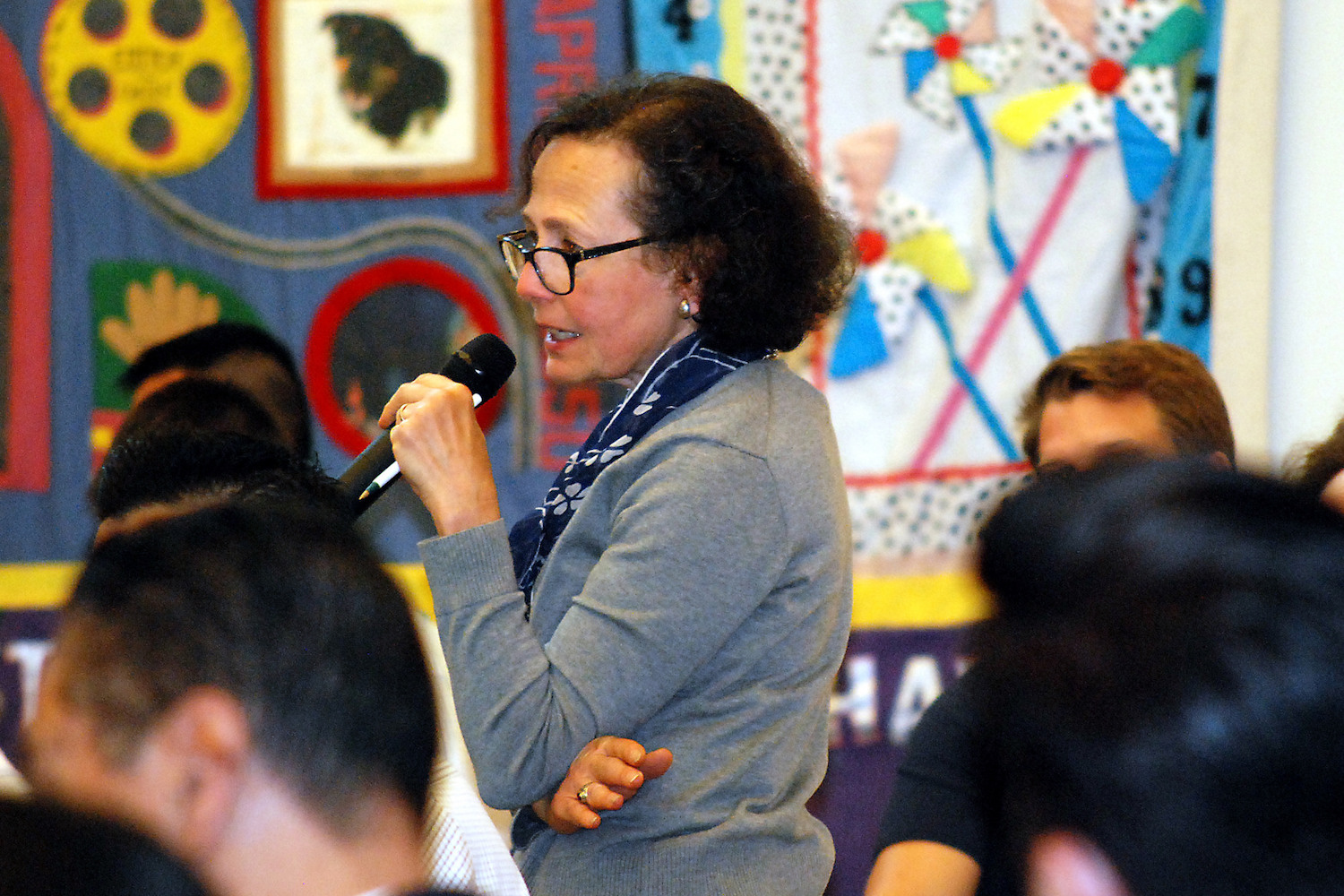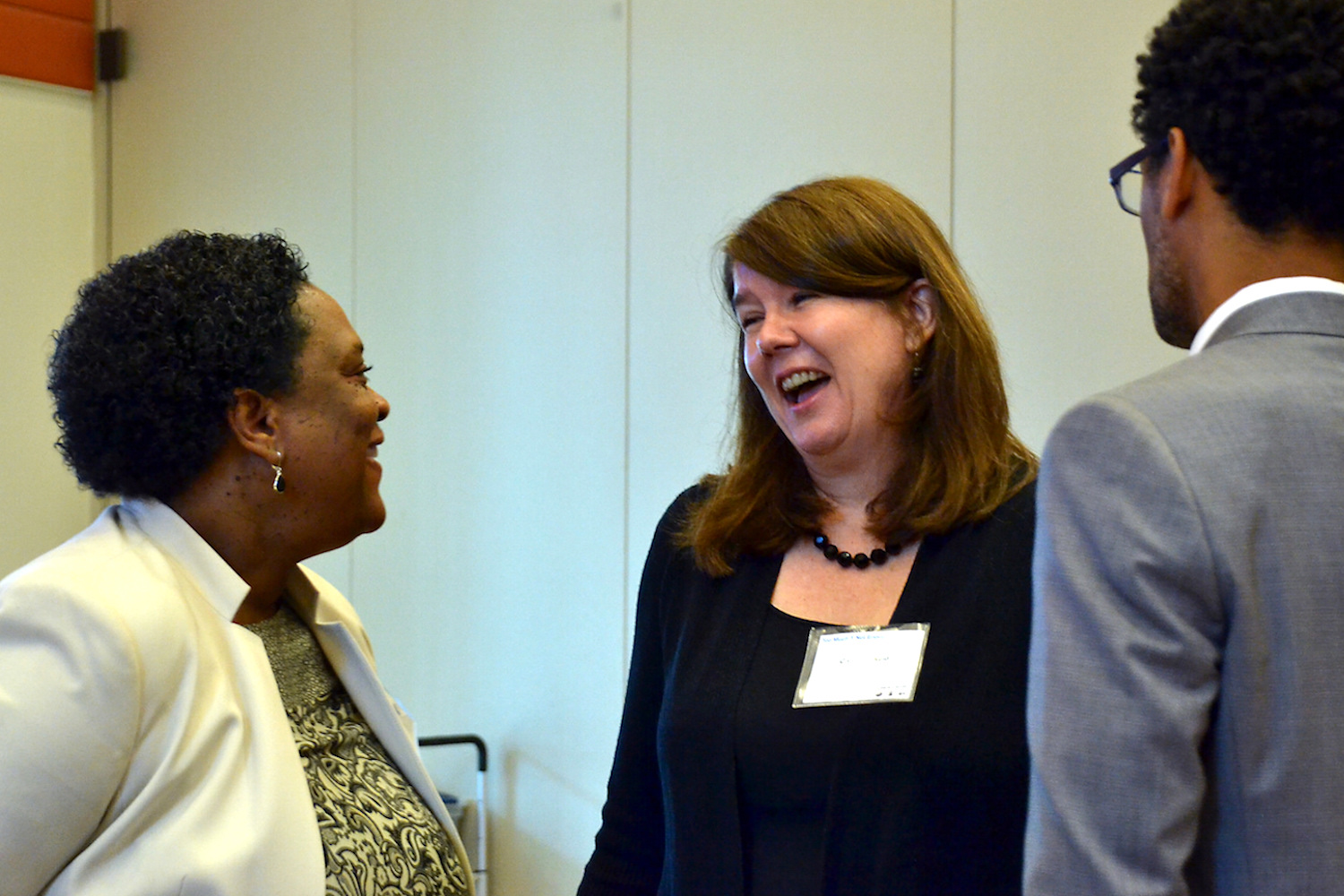By Stan Paul
“Too Much and Not Enough” is a recipe for a crisis when it comes to rising rents and lack of available and affordable housing in Los Angeles County.
It also was an apt title of the UCLA Lewis Center for Regional Policy Studies’ 11th annual Downtown Los Angeles Forum on Transportation, Land Use and the Environment, held May 18, 2018, at the California Endowment.
“The short story is the rent has been getting ‘too damn high’ for decades, and renter wages have not kept up,” said moderator Michael Lens, associate professor of urban planning and public policy at the UCLA Luskin School of Public Affairs.
In the last few years, a threshold has been crossed as “more and more households cannot really bear the rising costs of rent,” Lens said, launching a day of debate and discussion on a nationwide problem that is acutely felt in the L.A. region, which is also beset by chronic homelessness.
Experts representing academia, government and nonprofit organizations, as well as community stakeholders, came together to discuss problems, barriers and solutions to the multifaceted issue of affordable housing.
“Research is pretty unequivocal that increasing housing supply is necessary to stabilize prices,” Lens said, but there is less certainty about what happens in neighborhoods that receive new housing supply or investment. “Neighborhood dynamics certainly complicate any of our policy options or choices and solutions for increasing housing affordability,” said Lens, who also serves as associate faculty director for the Lewis Center.
‘If we want to stem the pipeline of people moving onto our streets, we have to come up with solutions that keep people in place, and that’s a moral issue, it’s a humanitarian issue, and it doesn’t rest with individual owners, it rests with all of us.’
— Panelist Jacqueline Waggoner
Paavo Monkkonen, associate professor of public policy and urban planning at UCLA, led the first panel of speakers, who looked at the causes and effects of the crisis from a variety of perspectives.
Panelists included Isela Gracian, president of the East LA Community Corporation; Robin Hughes, president and CEO of Abode Communities; Shane Phillips, director of public policy at the Central City Association; and Carolina Reid, assistant professor of city and regional planning at UC Berkeley.
“We can’t build affordable housing fast enough to meet the need,” said Reid, adding that “we don’t have a system where we can hold cities accountable for how much housing they’re producing to meet growing housing demand.”
Since 2000, half of L.A. neighborhoods built no housing at all, according to Reid. Citing gentrification pressures at the urban core, she said neighborhoods with the best transit access are building the fewest affordable housing units.
“Planning isn’t helping,” she added, noting that California cities continue to include minimum lot sizes and restrictive zoning. Compounding the problem are lengthy permitting and regulatory requirements along with strong public opposition to some affordable housing projects.
A second panel, led by Lens, addressed the politics of supply and evaluated possible solutions. Panelists were Becky Dennison, executive director of Venice Community Housing; Jackelyn Hwang, assistant professor of sociology at Stanford University; Jacqueline Waggoner, vice president and Southern California market leader for Enterprise Community Foundation; and Ben Winter, housing policy specialist with the Office of Los Angeles Mayor Eric Garcetti.
Hwang weighed the pros and cons of rent control. She cited research showing that landlords do take advantage of “perverse incentives,” such as converting units to condos to become exempt from rent control — and consequently decreasing rental housing supply. But rent control also protects tenants, she said, noting that it encourages longer-term and elderly residents to stay in place, protecting them from displacement.
“I think the takeaway from the study is it puts too much power in the hands of landlords,” she said. “I think there are ways to have rent control and maybe we can think of more creative ways on how it’s implemented.”
Waggoner is a proponent of rent control but said the strategy should be regional and not just within the city. “If we want to stem the pipeline of people moving onto our streets, we have to come up with solutions that keep people in place, and that’s a moral issue, it’s a humanitarian issue, and it doesn’t rest with individual owners, it rests with all of us,” she said.
Keynote speaker Kathy Nyland made her point succinctly: “Put people first, share the power, and let people be part of the solution.”
As director of Seattle’s Department of Neighborhoods, Nyland oversaw the overhaul of the neighborhood council system to emphasize inclusive outreach, equity and community engagement. She said she has looked at affordable housing from several vantage points, having also served as chief of staff to a Seattle City Council member and as a senior policy advisor to the city’s mayor.
Audience members had the opportunity to join the discussion, during the panels and at a reception that followed the conference.One of them was Tham Nguyen, a 2005 alumna of the Luskin Urban Planning master’s program, who is now a senior manager in transportation planning for LA Metro’s Office of Extraordinary Innovation.
“It’s certainly a very important component of transportation, looking at the housing and land use aspect,” Nguyen said. “This is a really great learning experience to see the conversations that are happening and unfolding around affordable housing.”
Brian Taylor, professor of urban planning and outgoing director of the Lewis Center, closed the conference with this observation: “I thought transportation planning was complicated, but you’ve got me humbled here.”
Taylor, who also serves as director of the Institute of Transportation Studies at UCLA Luskin, said he often hears comments that emphasize both connections and contradictions in transportation: “Traffic is terrible. We have to stop development. Let’s build a lot of rail and have transit-oriented development, but we’re really worried about gentrification.”
While the “enormously complex” affordable housing crisis has been manifested over years and solutions may be slow in coming, “that doesn’t mean they’re not worth pursuing,” he said. “But what it does mean is that the person that has been displaced today is not going to benefit from that immediately. …
“These problems are visceral and they’re current, and the needs to address them are immediate and pressing,” he said, adding that bridging the gap between slow market changes and urgent needs on the streets of L.A. “is really going to be the challenge as we move forward.”
View additional photos from the conference on Flickr:
